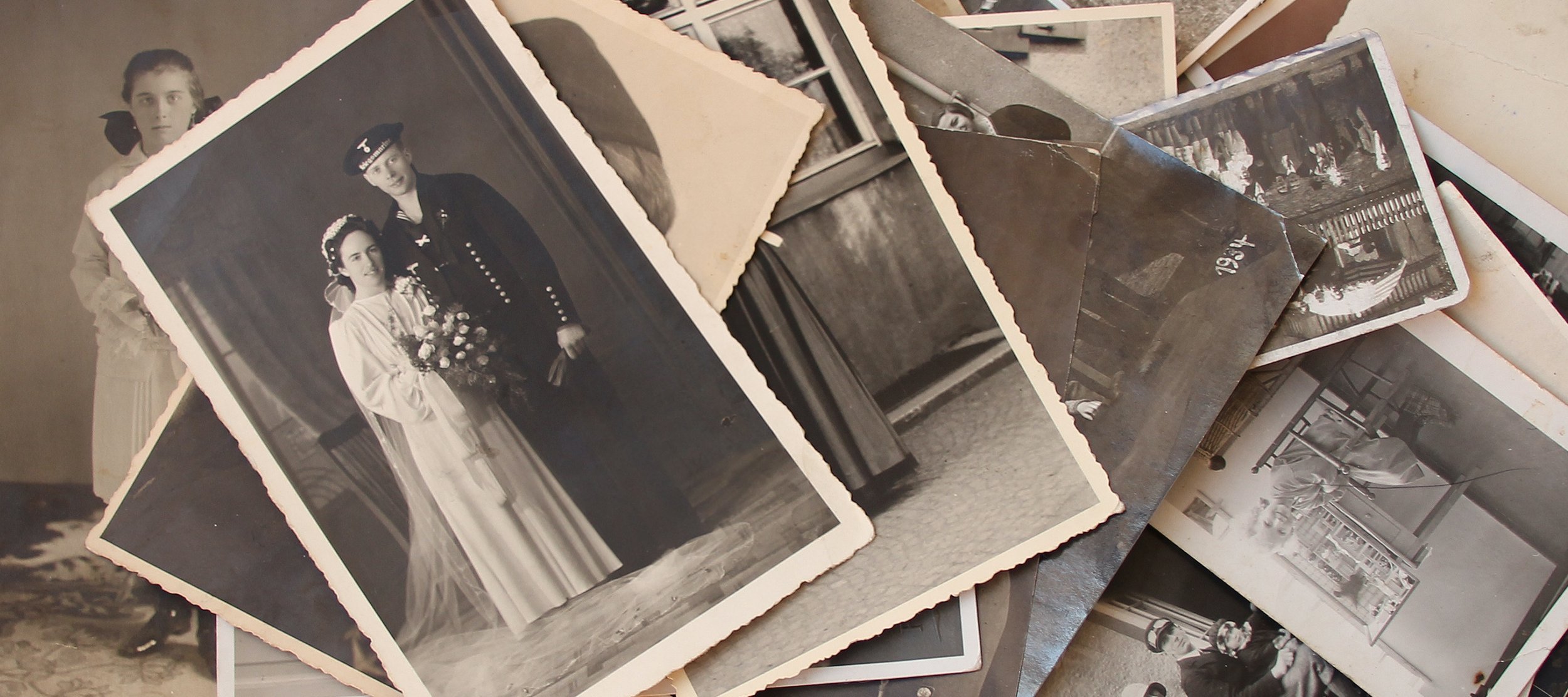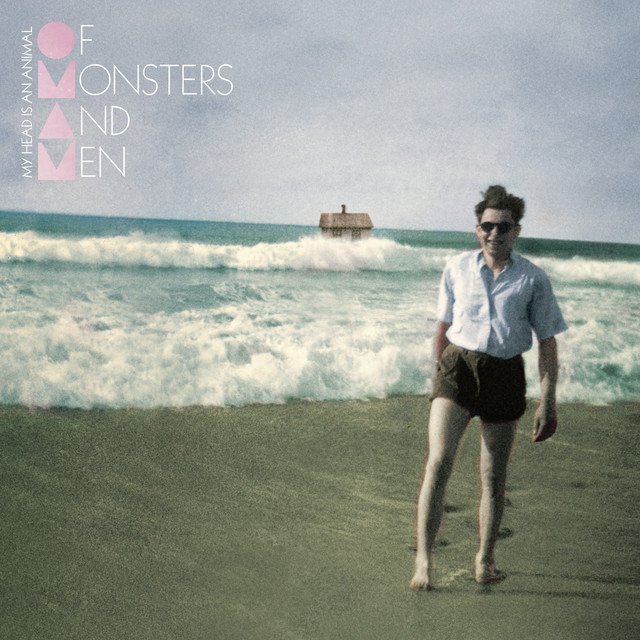From archive to artistry: the musical lives of old photos
You don’t have to dive very far into a contemporary indie playlist to be bombarded by ambiguous, often poor quality album covers, drawn from artists’ own family archives.
Image Credit: Adobe
In my dreams of releasing a second-rate indie EP, I think of plastering my great grandmother’s face on the cover, for no reason other than that she is beautiful.
The photograph’s chemical sheen seems to solidify her laugh, making the air around her appear blue. This is one of many family pictures my grandfather has saved on his computer, dating back to the early 1950s. While he pans through his own memories in his cluttered office, I look on with a greedy and perhaps overly romantic pair of eyes that see nothing but artistic potential.
You don’t have to dive very far into a contemporary indie playlist to be bombarded by ambiguous, often poor quality album covers, drawn from artists’ own family archives. In their inscrutability, it’s easy to forget that these images are often intimately tied to the music they overlay.
Take Psychopomp (2016) by Japanese Breakfast, whose cover features frontwoman Michelle Zauner’s mother, with the music reflecting the aftermath of her death by cancer. The photo seems to capture a fleeting moment of this woman’s joy, but one in which audiences are uncertain of where to orient themselves — as Emma Garland of Vice asks, is her hand reaching out to hold us, or letting us go? The album’s blurry yet lush set of instruments mirrors such narrative complexity, pulling listeners into a vortex of grief and euphoria.
Image Credit: Psychopomp (2016), Japanese Breakfast. Yellow K Records.
Sufjan Stevens’ 2015 album Carrie & Lowell likewise tackles intricate themes of death and abandonment. Its cover is a chapped, almost decaying image of the artist’s mother and stepfather, beneath whose fragile veneer he finds ways to grapple with his mother’s mental illness and addiction. Stevens’ bird-like falsetto and shy layers of plucked guitar imbue the album with both sorrow and hope. Such raw, ethereal production is undoubtedly in dialogue with the figures preserved in that ghostly image — whose story, like their digitally rendered faces, no longer threatens to fade.
Imaged Credit: Carrie & Lowell (2015), Sufjan Stevens. Asthmatic Kitty.
Common across covers featuring family members is a sense of melancholy and haunting. But it is made strangely soothing by the prospect that an artist’s ancestors have been given a second life, lingering peacefully to both experience and deliver the music. Even if their full story eludes us, the images’ vulnerability heralds the intensely personal nature of the songs unfolding.
And what of the more whimsical nature of old photographs? Many of my favourite indie songs carry meaning simply for their dream-like atmosphere, which can be blanketed over anything from a midday train ride to the start of a relationship. The images accompanying these songs often act as an intimate grounding for their obscure and fantastical sentiments.
Perhaps the most well-known example of this is Of Monsters and Men’s My Head is an Animal (2012), which signposts its sweeping tales of adventure and loss with a picture of guitarist Brynjar Leifsson’s family friend. If viewers don’t look carefully, they may miss the surprising element of his house being situated out at sea, but this playfulness evidently works as a kind of conceptual talisman for the band’s wide-ranging themes.
Image Credit: My Head is an Animal (2012), Of Monsters and Men. Record Records.
Wolf Alice’s Visions of a Life (2017) likewise extracts threads of whimsy from a childhood photo of singer Ellie Rowsell’s aunt. In an interview with NME, Rowsell frames the image of the poised, frock-wearing girl as an uncanny premonition of her aunt’s future career as a dancer, linking it to the band’s philosophy on their own work:
…she obviously had some vision of a life that she was playing out. […] That's what our songs are, I suppose – visions and little bits of life that somehow get made into music.
Image Credit: Visions of a Life (2017), Wolf Alice. Dirty Hit.
The ways in which feelings of nostalgia are teased out of the photos are indeed as eclectic as the indie genre itself. While Big Thief’s Masterpiece (2016) employs muffled vocals reminiscent of its lo-fi image, Beach House’s Thank Your Lucky Stars (2015) is a sumptuous bleed of synth waves and echoes which conjures the same wonder as in its cover subject’s eyes. Both albums, despite their musical differences, leave audiences in a similar reverie of times past — or perhaps, futures to come.
Image Credit: Masterpiece (2016), Big Thief. Saddle Creek.
Image Credit: Thank Your Lucky Stars (2015), Beach House. SUB POP.
This potential for storytelling is why family photos never fail to excite my poetic senses. Within the film camera’s imperfect engineering of colours and landscapes there is endless space for metaphor — what are mere leaves, when there can be leaves captured out of focus such that they appear to drip, heavy, in dusk’s arrival? What is smoothness when there can be scratches; evidence of the world’s physical touch, and a reminder that everything fades?
For members of my grandfather’s generation, the appropriation of vintage photos — and indeed, millennials’ general fondness for film photography — might seem an irksome aestheticization rather than an attempt at artistic renewal. But considering current and emerging technologies’ ability to digitally manicure photos (sometimes beyond recognition), something about the creative vision offered by indie albums feels worth holding onto. In not only accepting photos’ imperfections but extrapolating and reviving them through music, they keep alive an idea of beauty that is rooted in narratives rather than stagnant archetypes.
So it’s comforting that, as we go about our day, we can carry in our digital libraries proof that some aspects of life can evade, or indeed be reduced, by logical explanation. Scrolling through my scattered collection of indie songs, I understand their time-eroded covers as call-cards for something ephemeral — a pattern to life that ultimately can’t be expressed, but can perhaps be crystallised in parts.
While I won’t ever get to know my real great grandmother in that blue-tinged photo, I am assured there is meaning in pondering the unfinished poetry it has captured in her gaze.







